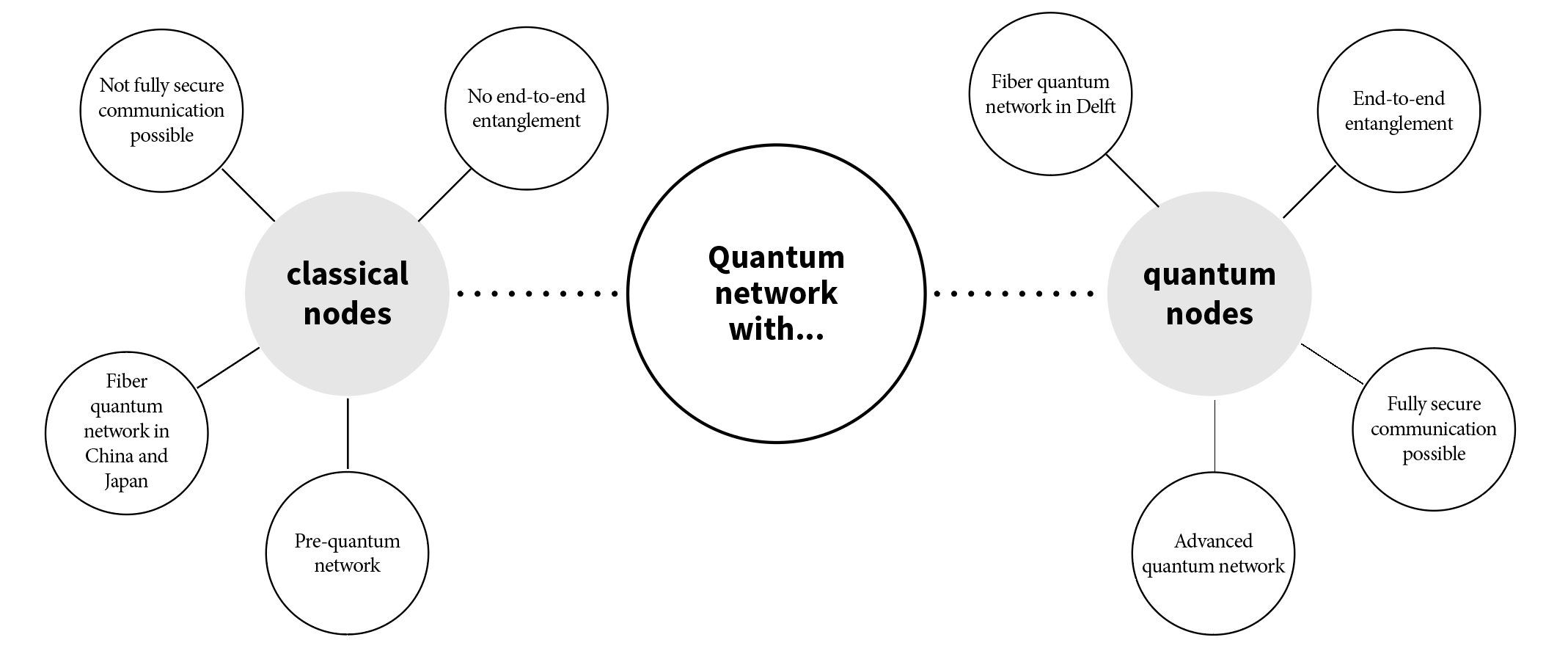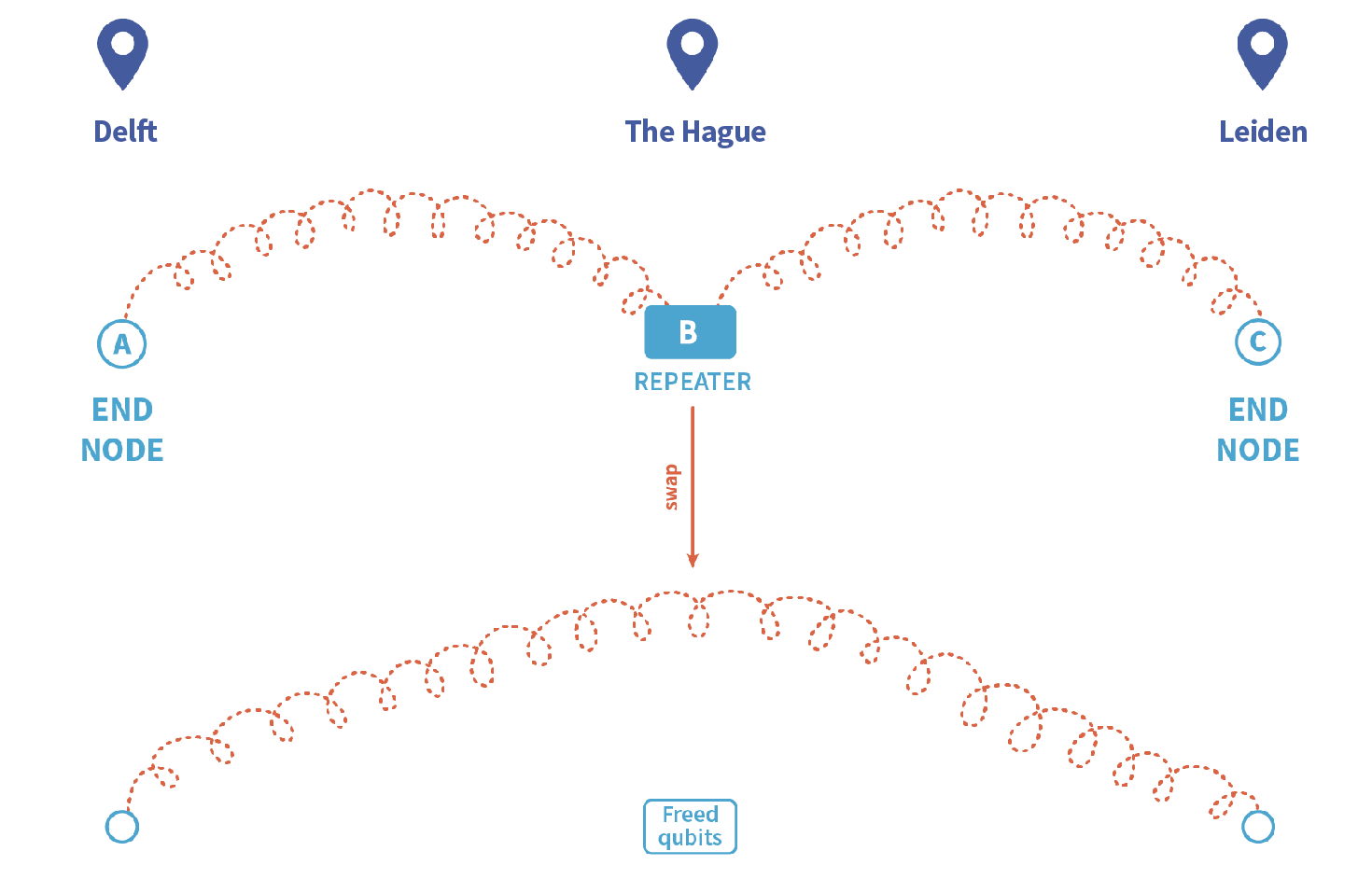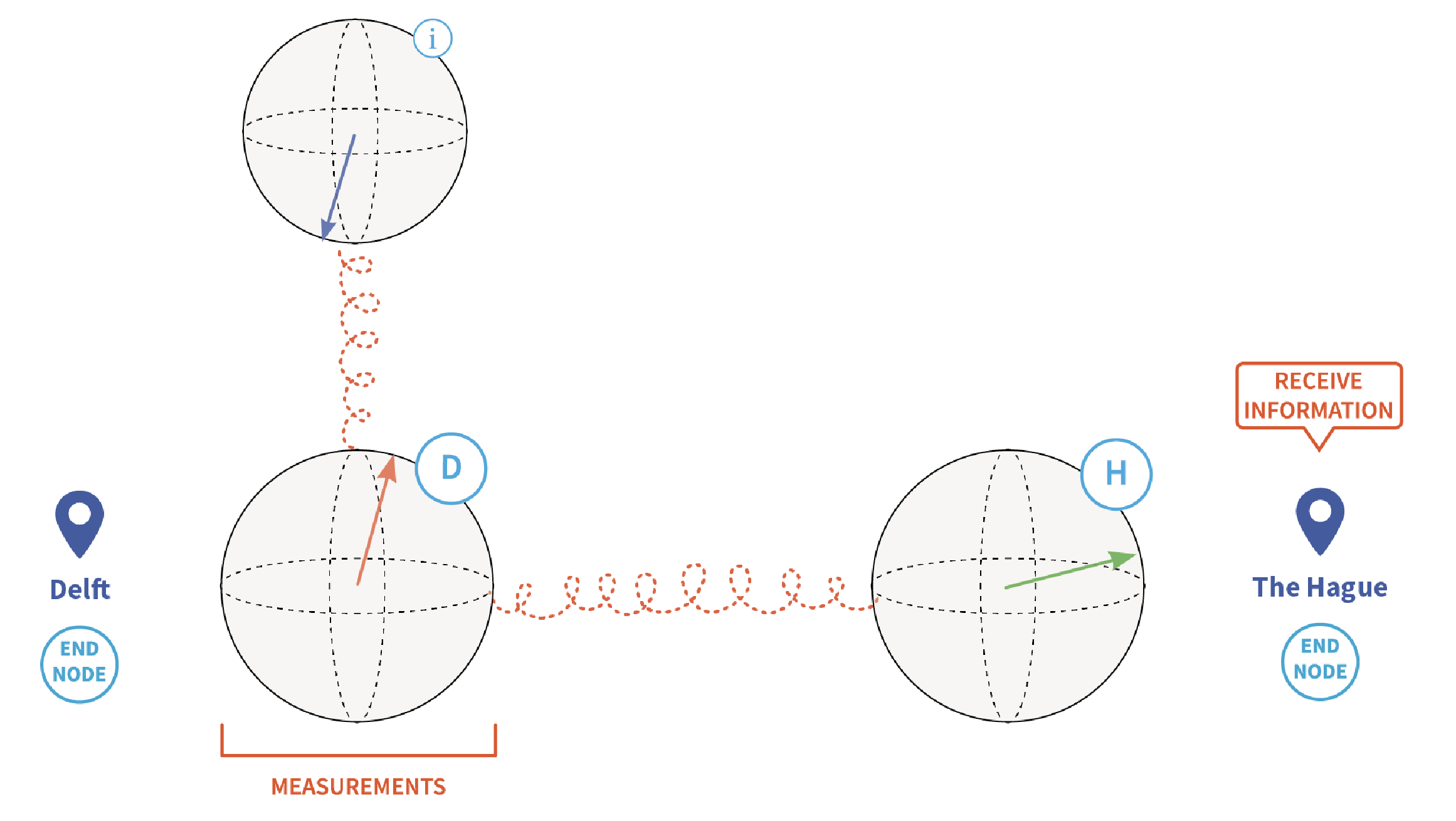Quantum repeaters and teleportation
In space, photons can travel for hundreds and hundreds of kilometers with a small probability of getting lost. This is a luxury that doesn’t apply to fiber. Imagine that you have a photon source that releases 10 billion photons every second. With a fiber connection in which a bit less than one out of twenty photons gets lost every kilometer, after 500 kilometers the rate has dropped to roughly one photon arriving every second. After 1000 kilometers of fiber there is such an immense drop in the rate that you might not even be able to measure any photon in your own lifetime anymore: after 1000 kilometers of fiber around one photon will arrive every 300 years. Therefore, the signal needs to be refreshed.
Refreshing the signal with classical nodes
In a pre-quantum network, such as the ones in China and Japan, this is the job of classical nodes. At the node, the photons that arrive are collected and their state is measured. Afterwards, fresh photons in the right state are sent towards the next node in the chain.

The next stage: quantum repeaters
In stages beyond the pre-quantum network, the aim is to refresh the signal with a different kind of node: a quantum repeater. True quantum repeaters have not been realized yet, but in the near future the basis for such repeaters will be laid on the Dutch quantum network. In order to understand how quantum repeaters work, it’s important to understand a different concept first: quantum teleportation.

If you’ve watched Star Trek, or any other science fiction film where teleportation is commonplace, you probably already have an idea of what teleportation should look like: an object disappears and reappears somewhere else. But while teleportation in science fiction films often ignores physical laws, quantum teleportation works just because of that. Performing quantum teleportation means that a quantum state disappears on one side and then reappears again at the other side. The quantum state doesn’t physically travel from one side to the other, but it is teleported. Also note that the state gets destroyed at the original location.
Beam me up Scotty
Captain Kirk, Star Trek
Quantum repeaters use this concept of quantum teleportation. Imagine that Delft and Leiden are part of a quantum network and they are connected via a quantum repeater in the Hague. First, entanglement can be generated between the end node in Delft and the quantum repeater in The Hague. Also, entanglement can be generated between the quantum repeater in The Hague and the end node in Leiden. Once both links succeed in generating entanglement, the quantum repeater can employ the following trick: it can use the qubit that is entangled with Leiden to teleport one qubit from The Hague to Leiden. In particular, it can teleport the qubit that is entangled with Delft. Hence, after performing the teleportation protocol Leiden obtains a qubit which is entangled with Delft. This procedure is known as entanglement swapping.
Teleportation of information qubits
Suppose that we have a quantum network between Delft and The Hague. The qubits in Delft and The Hague, qubit D and qubit H, are entangled. In Delft there is another qubit, the information qubit, that we want to teleport over the network to The Hague. First, the entanglement between qubits D and H needs to be stored in a quantum memory. Afterwards, qubit D and the information qubit can get entangled. In Delft, we perform certain measurements on the qubit D and the information qubit and afterwards we communicate our measurement outcomes to the Hague.
Note: this communication with The Hague is classical, not quantum. After receiving the classical communication, the node at The Hague performs certain operations to compensate for the measurement outcome which lead to qubit H having the same state as the information qubit originally was. In other words: the information qubit has been teleported.

Big alternative
China is working on a quantum communication network in space. In space, there is negligible photon loss and photons can remain in a superposition state for a long time, meaning that no repeaters are needed. Recently, a trusted repeater network was established between a satellite and three ground locations, two in China and one in Austria, quantum key distribution has already been performed. In 2017, a secure videoconference was held between scientists in Austria and China with this network. Since the rate at which keys were generated did not allow for direct encryption, the keys were used to feed a symmetric cypher (Advanced Encryption Standard protocol), resulting in the secure videoconference lasting for 75 minutes.
Furthermore, the Chinese team has also demonstrated quantum teleportation from the ground to the satellite. Since fiber networks have the advantage of efficiently and conveniently connecting several users inside a city, the satellite has already been connected to the Chinese pre-quantum network.
A quantum network in space has two main drawbacks. The first is a low transmission rate since out of every 6 million photons sent from the satellite every second, only about one photon was detected on the ground. The second drawback is that today, a quantum network in space can only operate at night. Therefore, China’s National Space Science Center is expected to launch other satellites that have stronger and cleaner beams such that it can also operate during the day.
References
Sangouard, N. et al. (2011). Quantum repeaters based on atomic ensembles and linear optics. Rev. Mod. Phys. 83, 33-80.